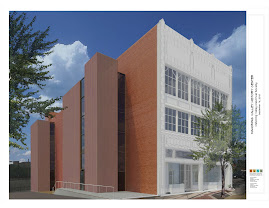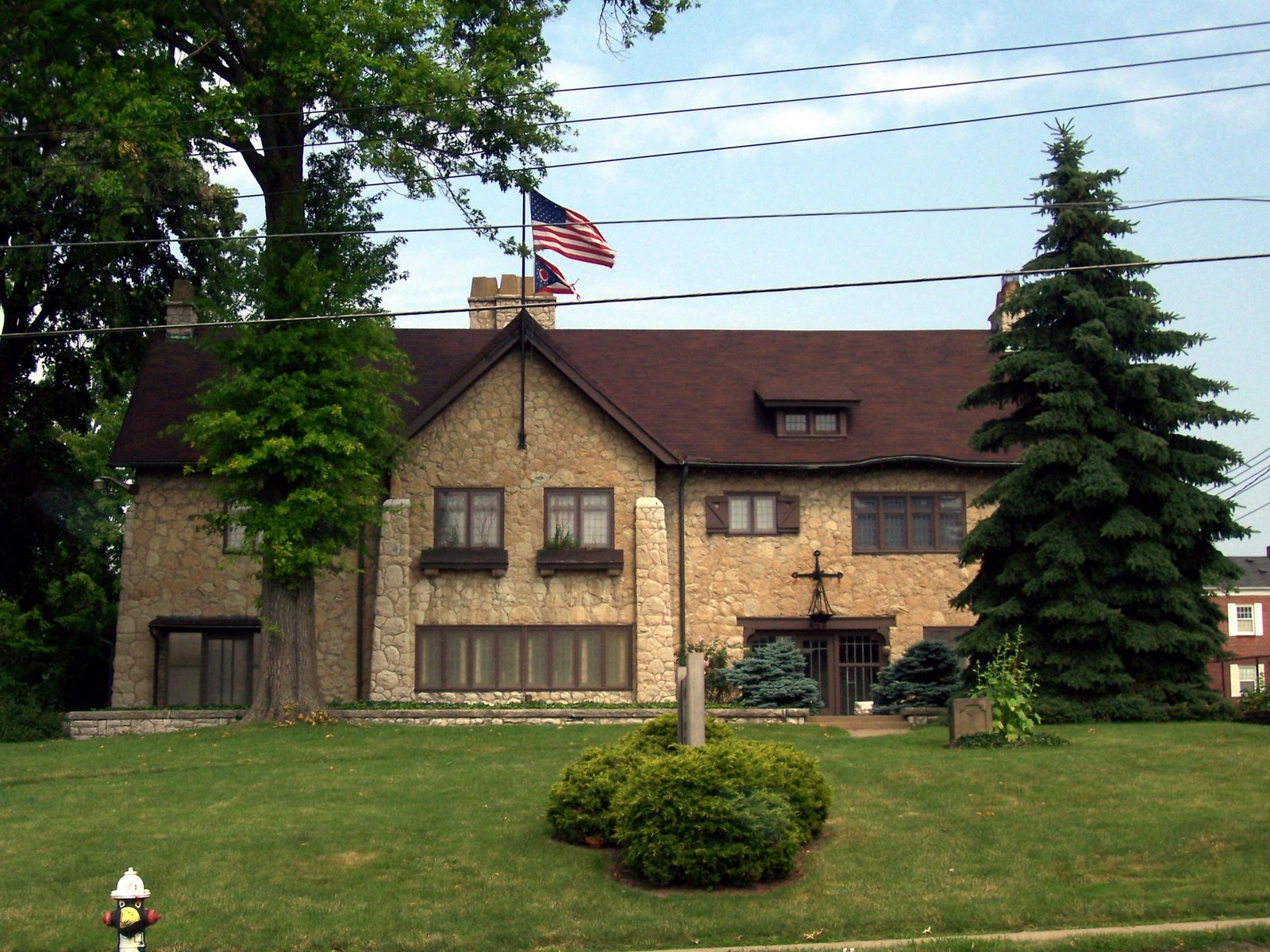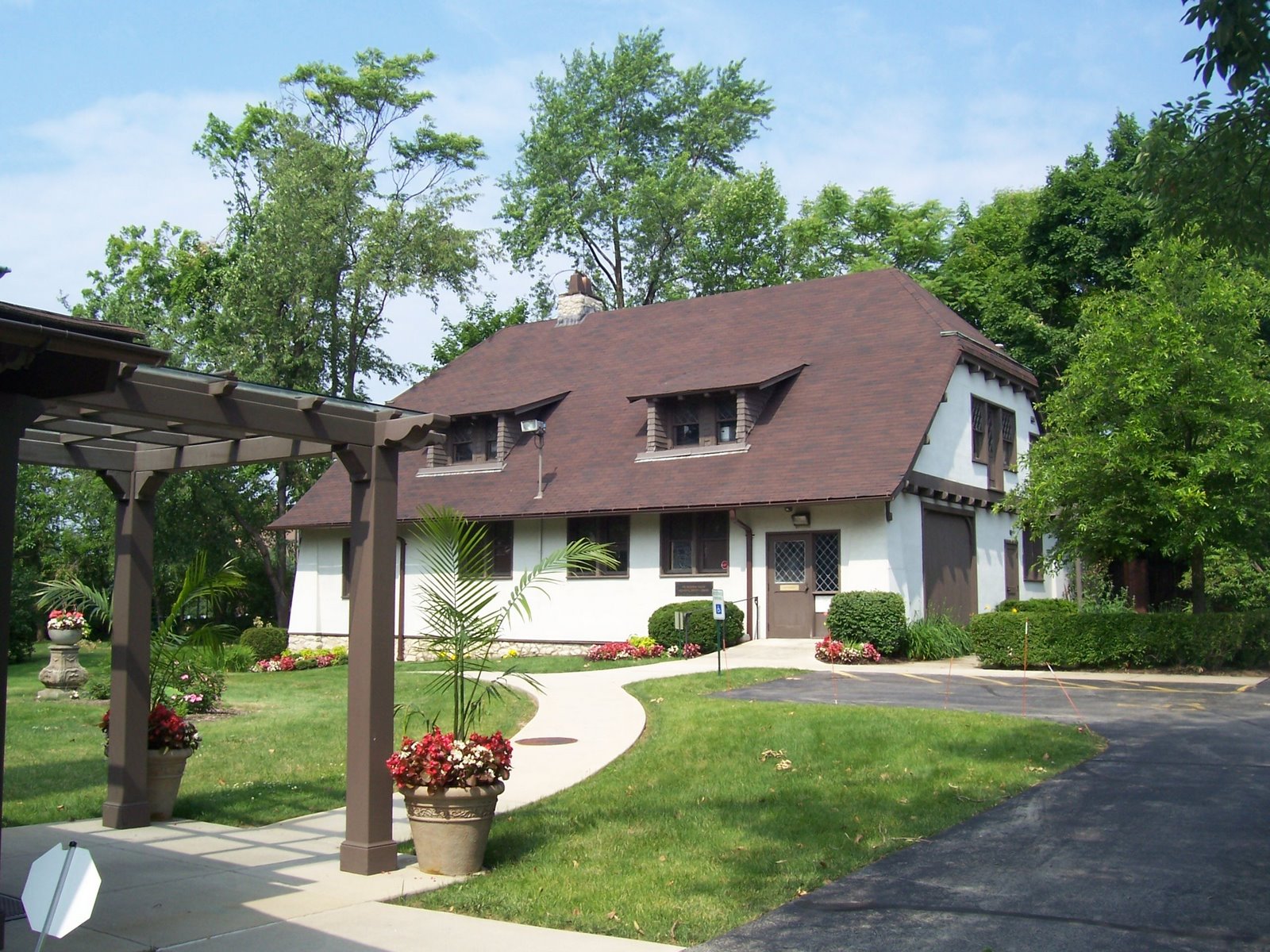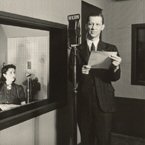On Saturday, November 10th, 2007 the Young Leaders Advisory Board hosted a tour of the Mahoning County Courthouse in downtown Youngstown. The following information was part of an exhibit explaning the history of Youngstown's quest to become the county seat of Mahoning County and a history of the different courthouse buildings.
Why is the County Seat Important?
In the early 1800’s county seats were emerging as significantly more important in the overall commercial and political development of a region. Unlike today, where official records and documents can be accessed digitally, county seats were the political and legal hub of most regions and their surrounding villages. Land deeds, marriage licenses, birth and death notifications, business transactions and more all had to be disclosed and filed at the county courthouse. As a governing center of a region the influx of visitors and businessmen stimulated commercial and industrial enterprises to locate in the immediate vicinity of the county seat.

Forming Mahoning County
In 1840 when residents of Warren campaigned for construction of a new courthouse the county seat controversy went all the way to the Ohio State Legislature. The 1845-46 Ohio General assemble led by influential legislators from Canfield and other sections of southern Trumbull County, proposed creation of a new county, comprised of the lower ten townships of Trumbull County and five upper townships of Columbiana County. On February 16, 1846 the Ohio Legislature passed the bill creating Mahoning County. Youngstown had wanted the county seat when it was a part of Trumbull County arguing that it was the center of the larger county. Now the newly formed Mahoning County awarded the county seat to Canfield, which was the geographical center.
Youngstown Becomes County SeatBy the early 1870’s Youngstown had emerged as the major industrial and commercial center of the Mahoning Valley. By this time, Youngstown had mustered enough political muscle to challenge Canfield as the rightful heir to the county seat “throne.” Each community ran a slate of candidates for the state legislature supporting the respective positions. With more than twice as many voters, Youngstown’s slate of candidates prevailed. As state legislators they set in motion the Removal Act transferring the county seat from Canfield to Youngstown. The bill passed by one vote. The bill stipulated that the city was obligated to raise a minimum of $100,000 for suitable county buildings and facilities, and they could not levy taxes to raise these funds.
Youngstown’s First County Courthouse 
The first court house building in Youngstown was designed by famed local architect Charles H. Owsley and built by masonry contractor P. Ross Berry in 1876 and stood at the corner of Wick Avenue and Wood Street. It was representative of the High Victorian Gothic style of architecture. The facility outlived its usefulness as a county courthouse in just 25 years.
Canfield Fights BackAfter the county seat was awarded to Youngstown, Canfield residents challenged the removal plan in common pleas court. A prominent Youngstown attorney, Thomas A. Saunderson, presented the city’s arguments before the court. Canfield’s interests were represented by James Auburn Garfield, who five years later would be elected twentieth President of the United States.
Denied victory in common pleas court, appeals to district court and the Ohio Supreme Court also ended in failure. Garfield carried the fight to the United States Supreme Court, the basis of his argument centering on language in the county’s original incorporation documents stipulating the county seat should be located “permanently” in Canfield. Final arguments were not heard by the High Tribunal until 1879, two years after the courthouse had been opened for business in Youngstown. Ultimately the Supreme Court ruled in Youngstown’s favor.
Legend or Fact? – Stealing the Courthouse
One evening after the courthouse had been built in Youngstown, the officials, all of whom were from Youngstown, went to a house south of Canfield. To trick the Canfield people they had a party, but really wanted to steal the courthouse. They had hired all the teams in Youngstown to come over to this party for a secret purpose. After dark, when the teams, two hundred in all, had assembled they went up to the court house, took the keys from the doorkeeper, stole all the books and records and loaded them on wagons. The Canfield people know nothing of this until the next morning.
An interesting fact connected with the evening’s work was that all the judges in the county mysteriously disappeared. It was said later that this was due to their desire not to compromise their political fortunes by grant an injunction against the raiders. Though the teams did not return to Youngstown with their booty until the small hours of the morning, the whole town was out with a brass band to meet them and escort them to the new court house.
Historical revisionists have since discounted these events as embellishments to the more likely scenario that wagons drove into Canfield in broad daylight, loaded their wagons, and drove to Youngstown, with little or no fanfare.
Youngstown’s Only Execution
In the first year of the new courthouse it became the scene of one of the city’s most famous murder trials. A jury convicted Charles T. Sterling of murdering a fourteen year old girl, Elizabeth Grombacher, whom he accosted on her way to work on the city’s southeast side. Sterling’s hanging on a scaffold in the courthouse yard in 1877 was the only such event in Youngstown. Subsequent executions took place in Columbus.
 Youngstown & Mahoning County Population Grows - Planning For A New Courthouse
Youngstown & Mahoning County Population Grows - Planning For A New CourthouseBy 1905, Youngstown’s population had escalated to 70,000 persons, while the county surged to more than 100,000. A referendum to build a new courthouse was held in 1906, and passed by a vote of 5,518 to 4,660.
Thirty-two years after his father planned the first Mahoning County Courthouse in Youngstown, Charles F. Owsley designed the current structure at Market and Front Streets. Amid pomp and circumstance involving hundreds of dignitaries the cornerstone was laid on June 11, 1908 and construction was completed in 1910. This structure was built to symbolize the area’s prosperity with county officials proclaiming that they would “build the finest courthouse between Chicago and New York.” Little money was spared on the building’s construction, using lavish terra cotta, marble and Honduran mahogany.

Architect Charles F. Owsley during construction
Cost of New Court House Drew Fire in 1911 
Residents were proud of their new courthouse at the corner of Market and Front streets, but when the final costs were added up, it became evident that they were nearly double the original estimates. The court house commission set the original estimates at $1,000,000.00 in 1906.
Land $394,155.00
Excavating $3,570.00
Construction Costs
Caldwell & Drake Contractors $ 957,801.00
American Ventilating Co. $ 440.00
J.D. Carrier (Linoleum) $ 170.00
Christ & Shieken Co. $ 957.00
Bruce Macbeth Co. power plant $ 27,000.00
The Brown Hunter Co. (inspections) $ 850.00
Champion Iron Co. $ 49,896.00
Dean & Haven (plumbing) $ 39,111.00
The Electric Wiring Co. $ 4,548.00
General Fireproofing Co. $ 36,867.00
The Hall Clock Co. $ 1,088.00
The Heller Bros. Co. $ 86,519.00
Jos Horner Co. $ 3,175.00
The Morreau Gas Co. $ 19,112.00
The McElroy C. $ 6,130.00
Owsley-Boucherle Co. (architects) $ 67,385.00
The Otis Elevator Co. $ 11,250.00
The H.J. Scholl Co. (plumbing) $ 52,049.00
United Elec. Co. $ 2,000.00
Misc. Expenses $ 2,727.00
Willet Schultz (interior decorating) $ 31,932.00
H.S. Williams Co. $ 2,905.00
A.L. Mollaeger Manufg. Co. $ 37,500.00
The Youngstown Chandelier Co. $ 376.00
Court House Building Commission Fees
John Stambaugh $ 1,500.00
John Robison $ 4,675.00
W.H. Auhlman $ 8,000.00
J.A. Cooper $ 8,000.00
J.B. Kennedy $ 6,500.00
W.A. Smith $ 3,250.00
Artwork
Vincent Aderente Mural Painting $ 3,500.00
The D. Ascenzio Studio (stained glass) $ 4,585.00
Beil and Hermcuit Sculptor $ 7,475.00
E. Blashfield Mural Pendatives $ 10,000.00
C.D. Hoover Portraits $ 1,326.00
Edith F. Stevenson (judge's portraits) $ 1,100.00
C.J. Turner mural $ 5,000.00
Total Cost $ 1,904,424.00 The current Mahoning County Courthouse
The current Mahoning County Courthouse
The architecture is Second Wren Renaissance Revival Style
1950’s Style DesecrationLike many historic buildings across the country that were subjected to 1950’s modernizations, most of the courthouse’s beauty had been eliminated. The decorative details of the structure had been camouflaged under a variety of false surfaces. Molded ceilings had been covered with lay-in ceilings, original light fixtures had been replaced with fluorescents, carved moldings were spray painted in shades of blue, black and gold and walls throughout the building had been covered with embossed blue and gold vinyl. And, with a desire to emphasize the steel image of the town, much of the wood – railings, doors and windows – were replaced with stainless steel. The exterior was maintained badly as well, the granite façade was sandblasted to remove the layers of steel mill soot, and the terra cotta band at the top was painted white.
$2 million to build; $8 million to restore
In 1985, after the steel industry collapse in the Mahoning Valley, the County Commissioners felt that restoring the historic land-mark designated courthouse could symbolize the city’s economic resiliency. The county and architects approached The Lyden Company, a petroleum marketer, and formed the Courthouse Restoration Committee to raise funds for the restoration. The campaign was organized to encourage as many individuals and organizations as possible to contribute. Every component of the building was priced so people could “purchase” anything from a window to a judge’s chambers. The campaign raised $900,000 with the balance of the $8 million construction costs financed through the sale of bonds.
Restoration CostsHVAC $ 1,800,000.00
Electrical $ 800,000.00
Architectural $4,500,000.00
Roofing $ 450,000.00
Elevators $ 30,000.00
Stained Glass $70,000.00
Art Restoration $ 350,000.00
Total $8,000,000.00
Six Year Restoration
From January 1985-to May 1991 Bob A. Mastriana, AIA and his firm the 4M Group set out to restore the exterior and interior of the courthouse. With original drawings and renderings scarce, the team had to endure tedious investigations to determine original colors and treatments in order to meet historic preservation guidelines. The process included restoring and replacing damaged marble, removing all the false surfaces and exposing the original detailing, the murals and pendentives were chemically cleaned and retouched, and a new HVAC system was installed. The project garnered local and national historic preservation awards.
Sources:
Mahoning National Bank 1988 Annual Report Courthouse Spotlight
Building Design and Construction (Magazine highlighting restoration)
 Television advertising rates are determined by the number of people watching at any given time. According to Telepulse for the Youngstown Metropolitan Area, September 18-24, 1955, WKBN-TV’s audience share far surpassed all of its competitors, including stations from Cleveland and Pittsburgh, in all time slots.
Television advertising rates are determined by the number of people watching at any given time. According to Telepulse for the Youngstown Metropolitan Area, September 18-24, 1955, WKBN-TV’s audience share far surpassed all of its competitors, including stations from Cleveland and Pittsburgh, in all time slots. 














